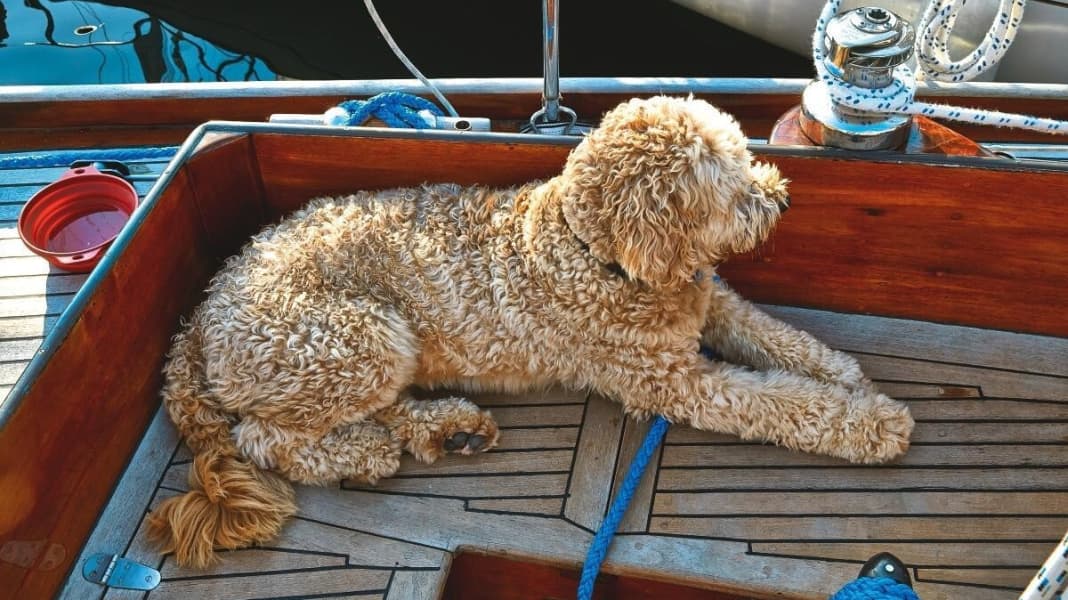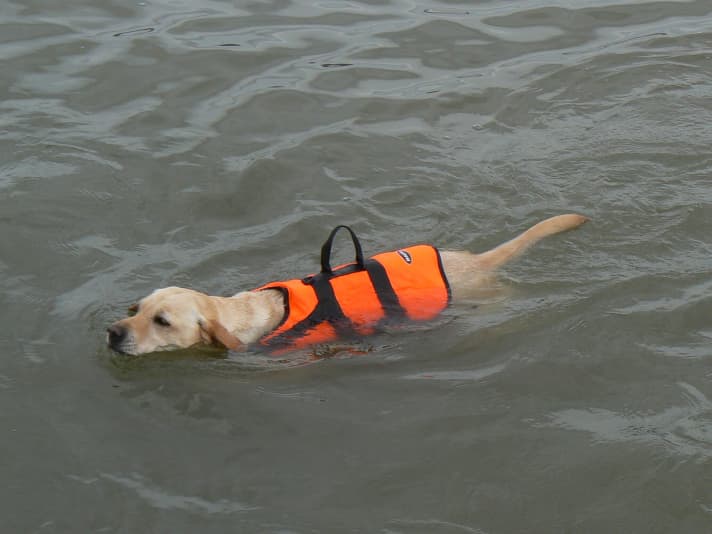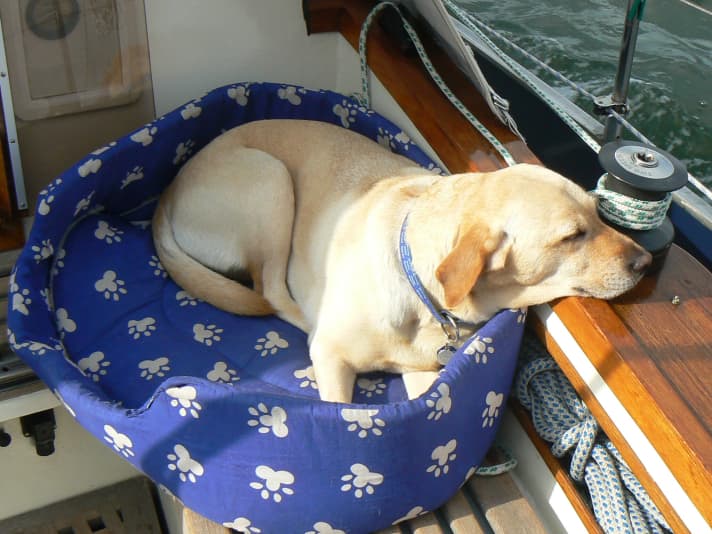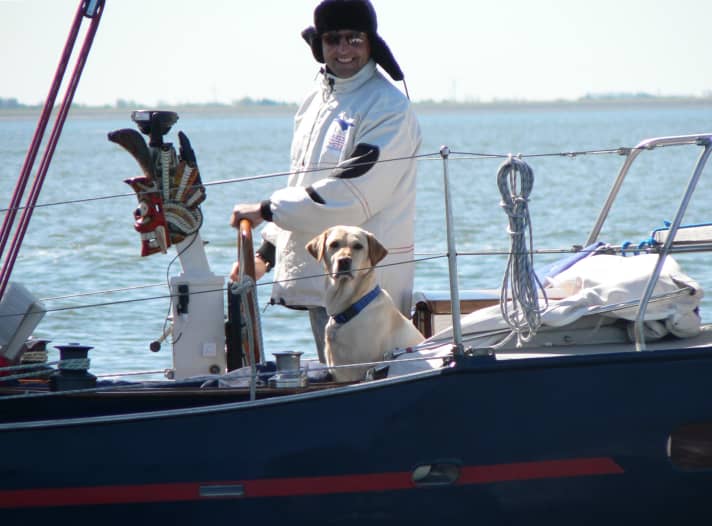Animals on board: Sailing with dogs: 10 tips for cruises with four-legged friends

Especially during the holiday season, many sailors ask the same question: Where to take the dog during the summer cruise? Taking your dog with you means making compromises. If you put your dog in kennels, you are missing an important family member - on holiday of all times. More and more sailors are therefore deciding to go on holiday with their dog. The infrastructure has become better and better over the years: Water bowls, poo bag dispensers and hooks for attaching the lead in front of the toilet block are now almost standard. There are sometimes more dogs than children on the jetties.
However, the many four-legged friends also attract critics: neighbours may feel disturbed by the barking and wonder what a dog is doing on board in the first place. After all, even with the best training, dogs will not become fully-fledged co-sailors who are able to assess dangers early on and pull sheets tight. However, they can still become enthusiastic sailors if they enjoy it.
Dogs and humans have a lot in common in everyday life on board. Animals are just as individual as people, they can get seasick, but they can also enjoy life on board. In this respect, there is no reason not to take your dog on a holiday cruise. But one thing must be clear: You must not go into it unprepared. You can train everything, and it has to be worth the effort! Going on holiday with your dog for weeks on end without preparation is simply negligent. But if the preparation is right and the dog has fun - then it's all good! - Dr Adelheid Prüfer, specialist vet for small animals
10 tips on how to make life on board with your dog a pleasure:
1. cruise planning
In general, you will plan the trip according to the dog's needs. Many sailors therefore tend to plan shorter trips of a few hours so that the animal has enough exercise and the opportunity to relieve itself. However, if it is used to doing its business on board (in a litter tray or on a piece of artificial turf, for example), then longer stretches in one go are also possible. However, as dogs do not usually relieve themselves in their own territory without further ado, this must be practised extensively in advance. Anything else would be cruelty to animals.
2. safety
Dogs should wear a life jacket on board. These are available in many different designs, sizes and price ranges. Almost all of them have a carrying handle on the back, which makes it easy to get the animal out of the water. If the dog is allowed to run around on deck while sailing, a railing net is recommended. In heavy weather, it should be kept on a lead in the cockpit or even below deck. In this case, however, take special care to ensure that all objects in the cabin are secured so that the four-legged friend is not hit by a piece of flying equipment.

3. vaccinations
In most European countries, dogs must be microchipped and vaccinated. This is documented with the EU pet passport, which must be carried. The UK no longer requires quarantine, but does require a veterinary-certified worming treatment no more than five days before entry. Further information can be found on the website www.petsontour.de
4. first-aid kit
Dog medication for diarrhoea and vomiting is just as important as disinfectants for wounds and bandages. It all depends on where you are travelling to: In the south-eastern Mediterranean, for example, the pressure of infection from parasites is greater than in northern Europe. What's more, more and more dogs have allergies, for example to insect bites. It is therefore advisable to take cortisone with you.
5. insurance
Every dog owner should take out animal liability insurance anyway. Sailors with dogs should clarify individually before the trip whether the insurance is also liable for damage abroad and what else needs to be considered.

6. seasickness
Dogs can get seasick just like humans. The vet has appropriate medication that can be administered with a clear conscience. However, it is often worth simply waiting a few days: As with humans, dogs also become acclimatised after some time on board. Animals can also learn that it is helpful to keep their eyes on the horizon.
7. equipment
Even if dogs have fur, this does not mean that they are insensitive to sunburn. And since applying sun cream is out of the question, a cooling or sun protection waistcoat from the outdoor equipment range can certainly be helpful. A waistcoat also protects your dog from cooling down if the sailing gets a little wet and your four-legged friend is sitting on deck in the spray and wind.
8. getting on board
Heaving a dog on board is not always easy. Small dogs can be lifted over the pulpit by the handle of the lifejacket, but this is not possible with larger dogs. This is where collapsible wooden or plastic ramps come into play, which can be stowed away to save space while sailing. It is better to moor with the stern to the jetty or alongside. A dinghy is important for anchoring.
9. life on board
Dogs sleep up to 18 hours a day. It is therefore important that they also have a quiet corner to themselves on board where they are not disturbed and do not disturb anyone. As they can hardly regulate their body temperature by sweating, fresh water must always be available.

10. life in the harbour
Not all sailors are dog lovers. It should be a matter of course for owners to remove all of their pet's droppings immediately. It is also not necessarily advisable to moor to the outside of a seven-pack with a dog on board. Apart from that, a little tolerance helps on both sides: not every "woof" is meant in a bad way.
If you're still sceptical, take a look at this video by cat adventure sailor Kathrin Szasz. In 2010, she went on a long voyage in a sports catamaran, a Nacra 5.0 - and even took her dog Lotte with her in the extremely confined space (YACHT reported in detail in issue 09/2011). The two of them obviously loved it.

